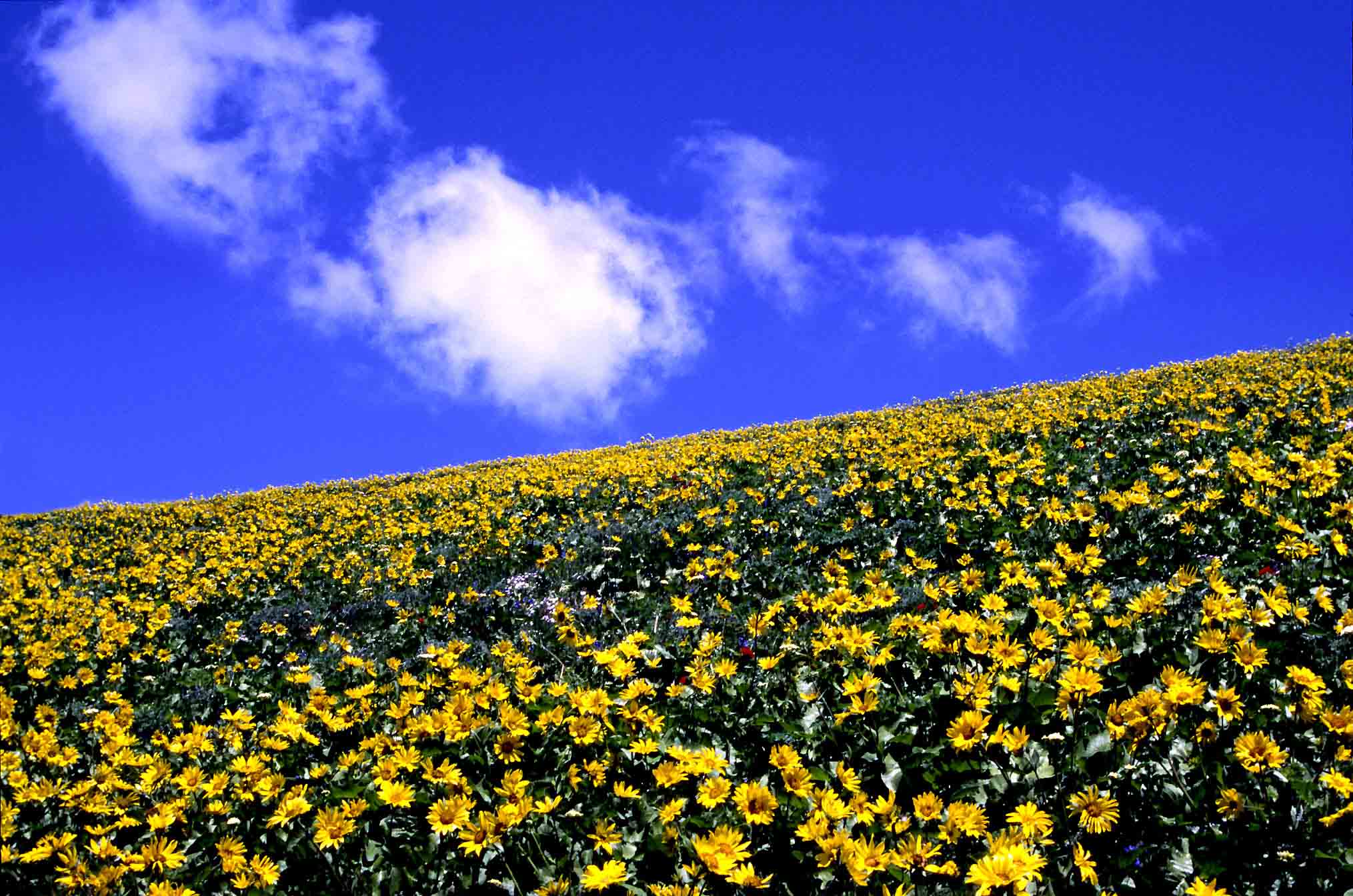
Yellow Balsamroot on Dog Mountain
Gifford Pinchot National Forest, Washington

Mount & Frame Your Photographs or Posters

Foam Core & Mats
Photographs should always be mounted on an acid free archival foam core
using archival techniques - any reputable custom frame shop will know how to do
this. Chose one or more mats as desired to match the image and the room where it
will be mounted. If you are using non-glare glass don't use more than one mat -
the image will lose sharpness. You really do not want the image to touch the
back side of the glass so a single mat or at least a thin spacer should always
be used as a separator. Without it, over time, the image inks may adhere to the
glass - producing visible contact marks.
Glass or Plexiglas
Many options are available from regular glass, to non-glare (NG) glass,
antireflective (AR) coated glass, ultraviolet (UV) resistant glass, and
Plexiglas.
Regular glass is the most common as it is clear, and allows a very sharp
view of the image with good color transmission through the glass. Regular glass
is also the cheapest option - another reason it is the most popular choice.
Regular glass is a good cost-effective choice if the image will not be
facing a window where it will pick up glare from the light.
NG glass is etched with acid on one or both sides. This provides a
specular surface which diffuses reflected light and significantly reduces glare.
It also reduces color transmissivity and image sharpness so glass etched on only
one side is much better than if it is etched on both sides. Face the etched
(rougher) side out toward the light. The further the image is from the back side
of the glass, the less sharp the image will be. That's why you don't normally
want to use more than a single mat if you are using NG glass.
AR coated glass is the highest quality and the most expensive choice. It
has the best combination of image sharpness, color transmissivity, and
antireflectivity. This is my first choice for the best images.
Plexiglas is an inexpensive and lightweight option. The clarity and color
transmissivity is the worst of all options. I have only used this on one image
and didn't like it very much. It is much lighter than an equivalent piece of
glass so that may be a consideration in some situations.
A rough comparison of the relative costs of these options follows:
Regular glass = $X
Plexiglas = $X
NG glass = $2X
UV NG glass = $4X
AR glass = $4x
UV AR glass >> $4X
UV Resistant Glass or Plexiglas
Even regular glass or Plexiglas will provide some UV resistance. Mounting
the image behind something will not only provide a UV filter of some
effectiveness but also provides some protection from ozone, and other pollutants
in the atmosphere. UV resistant glass or Plexiglas is much more effective at
reducing the aging affects of UV light. You should not display an image in
direct sunlight, even archival images will experience fading in direct sunlight.
If you must display the image in direct sunlight you should use UV resistant
glass, Plexiglas, or a UV resistant spray which you can spray on the image
itself and accept the fact that you will eventually get some color fading. UV
resistant surfaces are somewhat darker than non UV surfaces so the image will
not be quite as bright and colors can be somewhat muted.
Frames
Frame choice is, of course, very subjective and you want to pick something
that goes with the image and the room plus provides an aesthetic appearance that
appeals to you. Metal frames look very good on many things but I think natural
hardwood is the best for these wilderness images. Although metal might look good
with the underwater images. Some artists subscribe to the minimalist theory that
the frame should not take away from the image. I think that the image should be
complemented by the frame. A very thin black metal frame or wider black wooden
frame can be very nice with some images. For others I really prefer a wider and
more substantial natural hardwood frame in cheery, maple, or oak.
What Do I
Normally Use?
For most landscape images I prefer a wider natural hardwood cherry, maple,
or oak frame with one mat and Water White Denglass glass. For smaller colorful
underwater images a thin black metal or wider black wooden frame looks
very nice. You are getting a very nice contrast between the bright colors of the
image, the white mat, and the black frame. For large posters or topographic map
based posters I usually use a wide natural hardwood frame or large black wooden
frame, a spacer (no mat), and the Water White Denglass glass. This is very
expensive but very beautiful glass with maximum sharpness and color
transmissivity. After realizing that I was not happy with the frames
offered at most of the local custom frame shops I started attending
the Decor ArtExpo originally in New York City and recently in Baltimore where I
found a wonderful array of very beautiful natural hardwood frames and related
materials.
Custom Framing
We can provide custom framing for any of the images on this site.
![]()